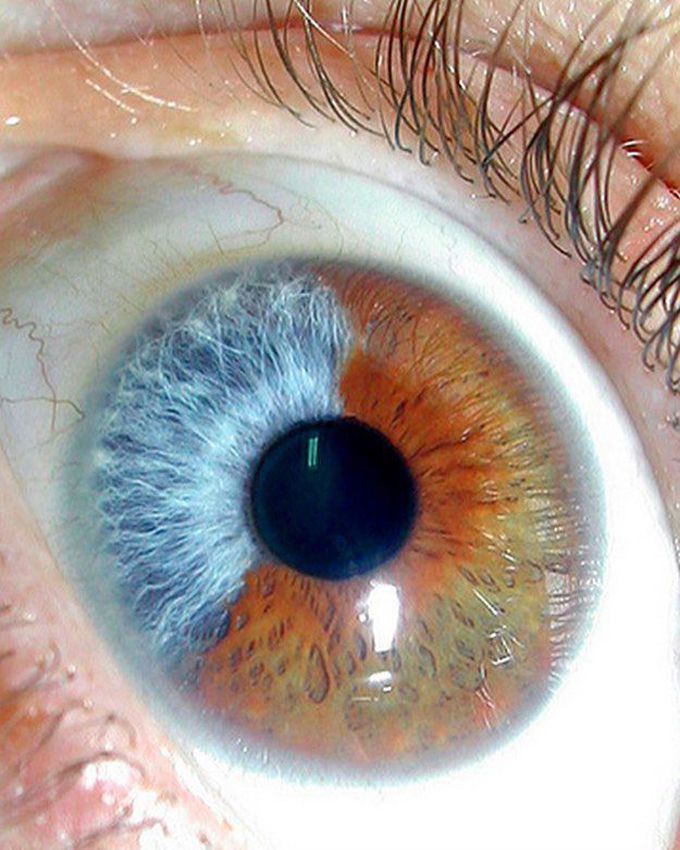


When one eye meets 2 colors!!
The color of the iris is determined primarily by the concentration and distribution of melanin, for example, brown eyes have large amounts of melanin pigment deposits, and blue eyes have a lack of melanin. Heterochromia iridis is a condition in which the iris in one eye has a different color than the iris of the other eye. The affected eye may be hyperpigmented (hyperchromic) or hypopigmented (hypochromic). In other words, an excess of melanin or the lack of it changes the color of the iris. But this photo presents an even rarer condition, when areas of the same iris are different in color, known as 'segmental or sectoral heterochromia'. Sectoral Heterochromia looks like an irregular spot that is a different color than the eye color and does not form a complete ring around the pupil. The majority of instances of heterochromia are hereditary and these might be associated with a congenital syndrome, such as waardenburg and sturge-weber syndromes, neurofibromatosis type 1, tuberous sclerosis. and incontinentia pigmenti. Other instances are acquired and caused by an injury or disease such as ocular melanosis, benign tumors, posner-schlossman and chediak-higashi syndromes. At times, one of a person's eyes might change color after certain injuries or diseases. Most cases aren’t associated with any disease or problem.
Hemodynamic stimuli&nonhemodynamic stimuliEffects of sugar on teeth

